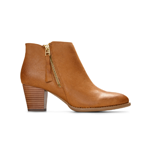
Soul To Sole: Posture For Power

written by Juliet Kaska, celebrity trainer, health and wellness expert and Vionic Innovation Lab member
Posture For Power: An Upright Approach To Improving Physical and Mental Health
More than likely, we’ve all spent a lot more time sitting this past year than we ever have done before. And, also more than likely, we haven’t been practicing proper posture while doing so. Who sits up straight on the couch while watching Netflix? Curling up can be cozy, but too much of a curled spine can wreak havoc not only on your physical health, but your mental health, too. Addressing our posture is a simple but profoundly powerful way to exercise self-care for both our body and mind—no gym required.
You’re probably already aware that poor posture can have many negative health effects like back pain, headaches, compensation injuries, poor digestion, affected sleep patterns, and the kicker: deformity— think The Hunchback of Notre Dame!
If those weren’t enough to make you sit up a little straighter, consider how it might affect your relationships, especially the one you have with yourself.
Poor posture can directly lead to a lack of confidence, sadness and depression, and a lack of motivation. As if we needed anything else to slow us down coming out of 2020! Further, it can actually affect the confidence you have in your thoughts. Feel like your affirmations aren’t working? It could be how you’re sitting or standing while saying them.

“Most of us were taught that sitting up straight gives a good impression to other people,” says Richard Petty, professor of Psychology at Ohio State. “But it turns out that our posture can also affect how we think about ourselves. If you sit up straight, you end up convincing yourself by virtue of the posture you’re in.”
Yes, you read that correctly, the study by Petty and his colleagues, Pablo Briñol and Benjamin Wagner, concludes that our body posture affects our own personal belief in — and trust in — ourselves. When we are in good posture, we believe our thoughts about ourselves.
“People assume their confidence is coming from their own thoughts. They don’t realize their posture is affecting how much they believe in what they’re thinking,“ Petty said.
Remember those affirmations? Try them again now, standing up tall!
Of course, we can’t talk about how our body’s stance affects our beliefs in ourselves without mentioning Amy Cuddy.
You probably know Amy for coining the “power stance.” But if you haven’t heard of her, or haven’t learned about the foundation beneath that famous phrase, please watch her TedTalk, Your Body Language May Shape Who You Are, it’s the second-most watched of all time. Cuddy is a professor and researcher of social psychology at Harvard Business School. In her original 2010 research* she found that “power posing” not only resulted in participants feeling better about themselves, but their hormone levels measurably improved as well.
Wowzer, let’s get to it!
Affirm and empower yourself daily by investing in your posture and so much more along the way. Here are some tips and exercises to strengthen your posture muscles. It’ll help you maintain your posture — and your confidence — all day long.
These exercises will help strengthen muscles to keep your shoulders back and your spine elongated. However, because you also have tight opposing muscles on the front of your body (which will continue to try and round you forward), it is equally as important to stretch these opposing muscles, too. We’re talking the chest and anterior shoulder muscles, specifically. The first video will demonstrate how to do two stretches for this area. You can do these throughout your day, as well as before and after your posture exercises below.
Exercise #1: Cobra
What you will need: an exercise mat or towel to lay on the ground.
Starting Position: Lie prone (facedown) on a mat/floor with your hands placed directly under your shoulders with palms down. Your legs are straight and together (or slightly apart, especially if you have lower back or S.I issues). Throughout exercise, keep your abdominal wall drawn up, your tailbone tucked under, your legs long (with the tops of your feet pressing into the ground), and your neck long. Keep your neck long throughout the duration of the exercise.
- Step 1: Inhale, and engage your upper and mid back extensor muscle to lift your head, neck and chest off the floor, while pressing into your hands.
- Step 2: Hold for 20-30 seconds. While holding, keep your shoulders away from your ears, your upper arms drawn in toward your body, and pull your energy forward and upward to maximize the exercise.
- Step 3: Exhale, and lower your body back to the ground; your forehead will be the last thing to arrive.
- Repetitions: Do this 3-6 times, 1-2 times a day, every other day for the first 2 weeks, then progress to 5-6 days a week.
- Tips: If you experience any pain or tension in the low back, stop the exercise. You want to feel this exercise in the upper and mid back area, not the low back. You’ll also feel an opening/stretching sensation across the chest.
- Progression: After you have built up some strength, try lifting the forearms and hands off the ground during Step 2. Just don’t sacrifice any of your lift/height.
Exercise #2: Rows (Close Grip—Tubing—Standing)
What you will need: an exercise band of medium to heavy resistance, or 2 free weights.
Starting Position: Anchor your band just above navel height. Holding both handles, step back until your arms are straight in front of you and there is tension on the band (the more tension you begin with, the stronger the resistance.) Face your hands toward one another. Stand with your feet hip-width apart, a slight bend in your knees, and your abs drawn in throughout the exercise.
- Step 1: As you engage the muscles in your back, all around and between your shoulder blades, exhale and pull the band toward you. Keep your forearms parallel to the ground as you move. Pull back until your elbows are behind you and your chest feels open. Imagine there is a pencil between your shoulder blades and squeeze it.
- Step 2: Inhale as you release. As you release, keep holding on the imaginary pencil till your arms are fully extended.
- Variations: A close-grip row can also be done bent over with free weights, a barbell or bands. It can also be performed seated or standing at a cable machine. See photo insert for bent over dumbbell variation.
- Repetitions: 3 sets of 15 with a 30-60 second rest between each set, every-other day for the first 2-4 weeks. Then increase your resistance so it’s just about impossible to do 15 reps with good form. Still do 3 sets; 1st set = 15 reps, 2nd set = 12 reps, 3rd set = 10 reps. (the 2nd & 3rd set should not be easy, by the last 2 reps it should be very challenging. If this is not the case, you may need to advance to a heavier resistance band.
- Tip: Each time you bring it back, hold for a moment before beginning the release. As your arms move, hold the rest of your body still. Keep your shoulders back and chest open throughout.
Exercise #3: Door Hinges (external shoulder rotation)
What you will need: an exercise band of light or medium resistance.
Setup: Can be done standing or sitting. Holding the band in both hands, bend your elbow to 90 degrees and place them at your side. Palms are facing up. The band should be tight enough so that it’s not sagging between your hands. It’ll look like you are serving a tray in front of you. Keep your shoulders back and your chest open throughout exercise.
- Step 1: Hold elbows and upper arms against the body as you pull the band apart. As you do this, keep the forearm, wrist and hand in “locked” alignment, so that you don’t cock the wrist up, down or sideways.
- Step 2: Hold for a moment, feeling the work in your posterior shoulder and all around the scapula, as well as an opening-stretching sensation across the chest.
- Step 3: With control, resist the pull of the band to return to the start position.
- Step 4: On your last repetition, hold and do 10 small micro-movements further back.
- Step 5: With control, resisting the pull of the band, return to the start position.
- Repetitions: 10-20 reps, 1-2 times a day, every other day for the first 2 weeks, then progressing to 5-6 days a week.
- Tip: Keep forearms, wrists and hands parallel to the ground as you move. Try and keep the shoulder blades from moving, and keep them flush with your back.
* Cuddy’s original research was disputed in the scientific community, as a “failure to replicate.” She redeemed herself and her work in 2018 with a rebuttal study . This 2018 study proved her original thesis that “that power posing increases feelings of power.” The question as to whether or not it improves hormone levels is still up for debate. For more on this scientific world drama (death threats and all), click here.









